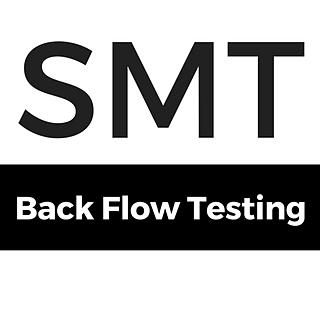The role of a backflow preventer for irrigation systems
- Steve Tamkee
- Feb 12
- 2 min read

Your irrigation system keeps your lawn healthy. But did you know that it also works to keep the water supply safe? A backflow preventer is a device installed on water pipes that prevents water from moving backward - called back-siphonage - through an irrigation system. This function is called backflow prevention, and its sole purpose is to keep contaminated water from entering the public drinking supply.
Backflow prevention, or cross-connection control, is integral to water distribution systems. Whether it’s a lawn irrigation system or, a fire sprinkler system, ensuring that water is only flowing in one direction. And, they are required to be tested every year to ensure that they are functioning properly.
But before we dial into the specific municipal backflow compliance requirements for your backflow preventer, I wanted to discuss water testing and how your backflow preventer contributes to maintaining a healthy drinking water supply.
Maintaining healthy drinking water
In Metro Vancouver, and really every other municipality in the province (and country) water quality is regularly monitored. And rightly so. With 3 million people relying on Metro Vancouver’s water supply, the need to ensure that it meets a specific set of standards is a priority. Municipalities, like Metro Vancouver regularly test their water supply to make sure it is free of contaminants like bacteria, discoloration, and even temperature.
Because there’s nothing worse than turning on your tap and having the water that pours out appear less than appealing with floating sediment particles, unusual colours, strange taste, or foul smell.
Now, before you start worrying about drinkable water in British Columbia, you should know that our water quality is generally safe - and quite tasty! But sometimes, accidents happen, and contaminated water finds its way into the main water supply.
This can happen in a variety of ways, including water main breaks and cross-connection failures.
That’s why municipalities across BC have a Cross-Connection Control program in place, that serves the purpose of keeping the quality of residential or commercial water safe.
Backflow preventer compliance
Backflow preventers are an essential component of any water system, especially in commercial settings. You will find backflow preventers in:
Underground irrigation systems
Commercial boiler systems
Swimming pools
Commercial food equipment
Fire sprinkler systems
Because backflow preventers play such an important role in preventing contaminated water from flowing backward into the drinking water system, certain requirements need to be adhered to.
Within the backflow preventer assembly, there are internal springs and rubber parts that over time can wear out. To ensure that the internal componentry is functioning as required, annual recertification by a certified backflow assembly tester.
A certified tester will be able to assess and address any issues that may arise with the backflow preventer in your water system. The tester will also be able to submit the results of their test to the given municipality.
You will be required to test your backflow preventer in the following circumstances:
At the time of Installation
Annually, following installation
Following cleaning, repair, or modifications
Upon request by a governing body, or engineer
If you think it’s time to have your backflow preventer recertified, or if you have questions about the process involved, call or email me for a free consultation and quote.




Comments